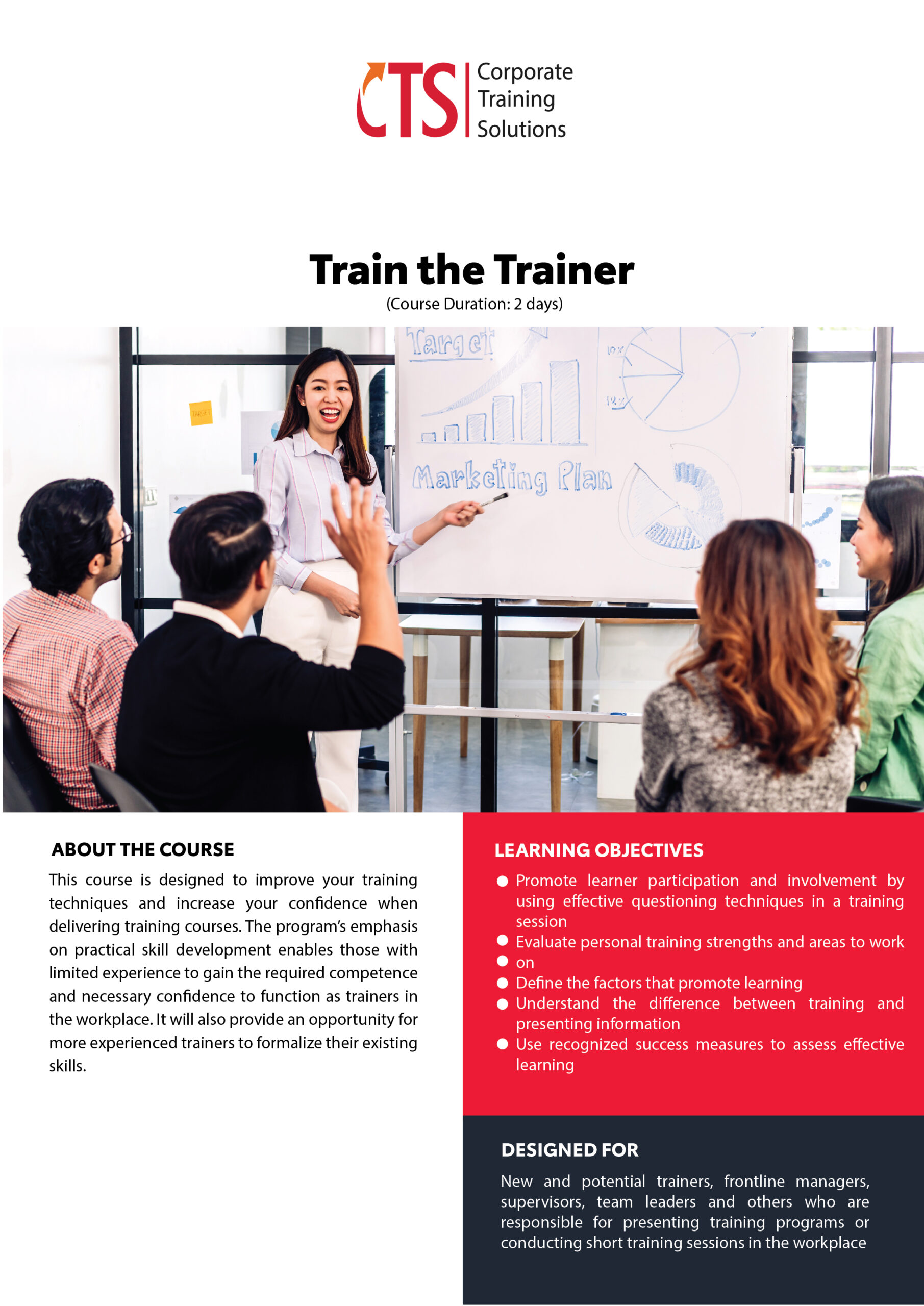INTRODUCTIONS AND OBJECTIVES
• What is learning
• Adult learners
• What makes an effective trainer
• Identifying learner needs
• Training session and feedback to identify strengths and areas to work on
• Identifying the language, literacy and numeracy needs of participants
IDENTIFYING TRAINING NEEDS
• Matching training needs with competency standards
• Training needs analysis
• Training needs analysis forms
• Developing training objectives
• Training outcomes
• Assessing the participants following the training
WHAT IS EFFECTIVE FEEDBACK
UNDERSTANDING LEARNING – HOW DO ADULTS LEARN
• Training approaches
• Using more than one approach
• Training methods
TRAINING VERSUS PRESENTING
• Planning the introduction of your training session
• Planning the body of your training session
• Planning your conclusion
• Session plans
• Presenting information
TRAINER TECHNIQUES TO PROMOTE LEARNING
• Use of resources
• Demonstrating skills
• Effective questioning
• Dealing with difficult learners
PRACTICE TRAINER TECHNIQUES IN A TRAINING SESSION
• Effective communication
• Facilitating learning
• Providing opportunities for practice
• Encouraging participants and providing feedback
• Revising and modifying the training session
PLANNING AHEAD
• Encouraging learners to assess their own performance
• Evaluating the training session
LEARNING TOOLS
- A.R.T.P learning style model
- Training session evaluation checklist
- Tips for conducting a training need analysis
- Tips for designing a training plan
- INTRO model
- Communication process model
- Questioning and listening techniques





